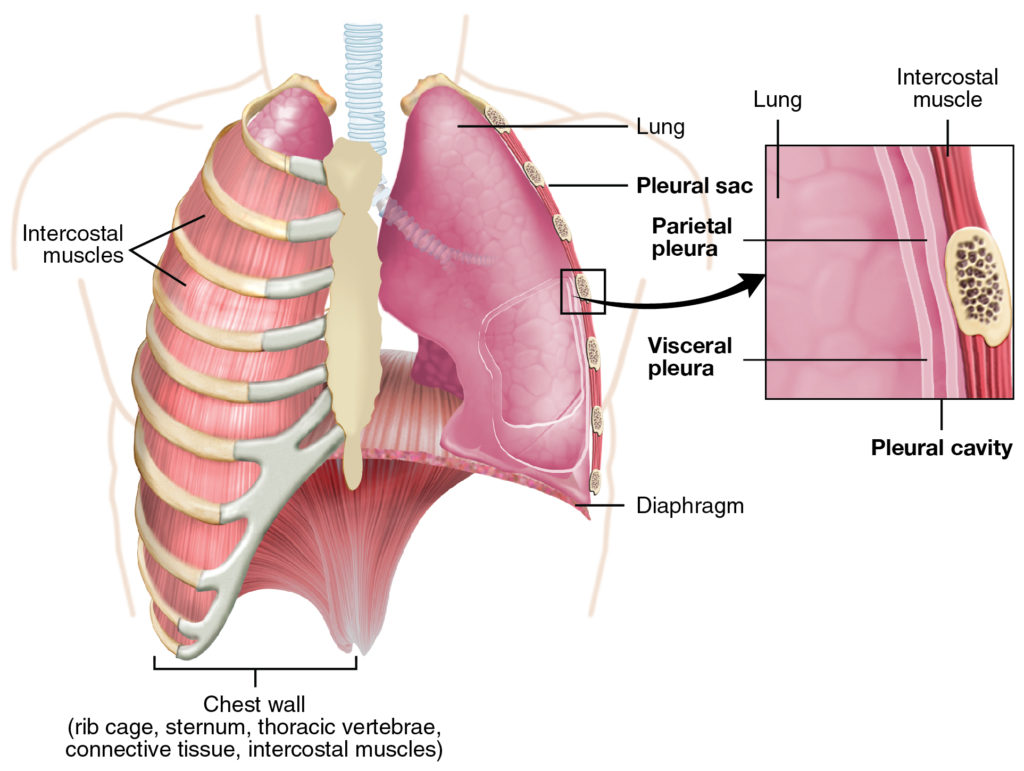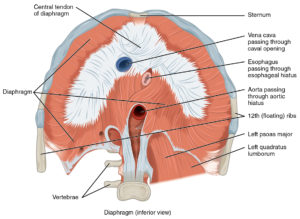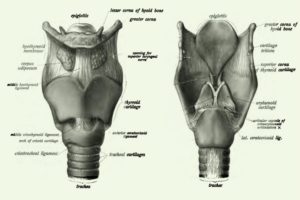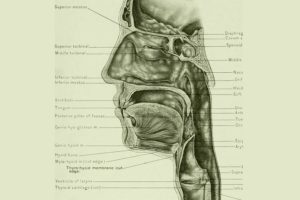The diaphragm, also known as thoracic diaphragm, is a C shaped structure of skeletal muscle and fibrous tissue that is located across the bottom of the thoracic cavity. It is like a dome oriented upwards and separates the thoracic cavity that contains the heart and lungs, from the abdominal cavity. This muscle is located just below the lungs, having a primary function in breathing, so it is essential for singing. It is a little asymmetric because beneath the right half there is the large liver and the left side is lower because of the presence of the heart.
Unlike the rest of the muscles of the body, this is not completely fixed and bridged to the walls, it is mobile, making it a complex structure.

It is located at the level of the ribs (from the 7th to the 12th), behind the sternum, just at the level of the lumbar vertebrae. In addition, it has large holes in the center to allow the passage of relevant structures such as the esophagus, aorta and vena cava. It is in direct contact with our lungs, heart, and the rest of the organs found in our abdomen.

GREAT BOOKS WE RECOMMEND, CLICK ON THE IMAGE TO KNOW MORE! 🙂
WHAT ARE THE FUNCTIONS OF THE DIAPHRAGM?
BREATHING FUNCTION
Breathing is a slightly more complex process than we might think. Our lungs do not “widen” allowing air to pass from the outside to the inside, but the breathing process itself is created by the muscles.
We must see the respiratory system as a kind of accordion. When you open it, the air comes in quickly; when you close it, the air comes out and it is what allows the sound. Our breathing works the same way, our muscles, as they relax, allow the opening of the rib cage, creating a negative internal pressure that ends up moving the air from outside to inside. Of all the muscles that participate in this event, the diaphragm is the most important since it is the one that most influences the movement of air.
This beginning, the inhalation, is a totally active process, however, the exhalation is another story. Without the need for any muscle, we can expel the air slowly. What is important is to expel it at will, especially when we want to emit a sound; this is where the Diaphragm becomes more important.
Those old sayings of “breathe with your belly” are not a lie, because everything goes back to our birth. As babies, we breathe with the diaphragm, but as we get older, we lose that condition.
Singing is an art of the larynx, but it is born in the Diaphragm.
Breathing with the diaphragm allows us greater control and stability, the volume of air we can inhale, or exhale will always be greater, as well as the power. This is the natural way of breathing, which allows us more effective inhalations and exhalations.
To sing properly, it is necessary that we use the diaphragm to its full potential both in inspiration (to be able to take in greater amounts of air as the rib cage expands widely) and in exhalation (to emit a loud and clear voice that reaches every corner, with the ability to be modulated and regulated at will).

OTHER FUNCTIONS OF THE DIAPHRAGM
The diaphragm is not only involved in the respiratory functions, that is the base also of phonation. By increasing the intra-abdominal pressure it is fundamental also to expel vomit, feces and urine from the body, it prevents acid reflux and it aids in childbirth.
GREAT BOOKS WE RECOMMEND, CLICK ON THE IMAGE TO KNOW MORE! 🙂



